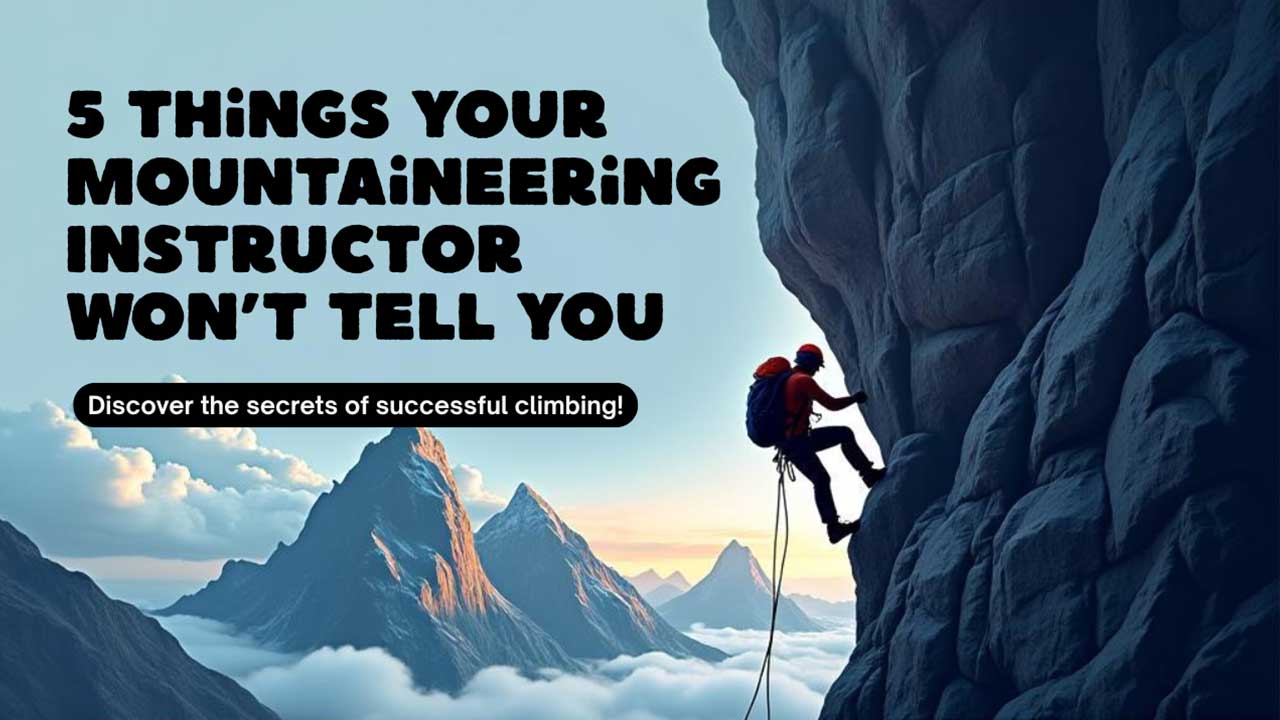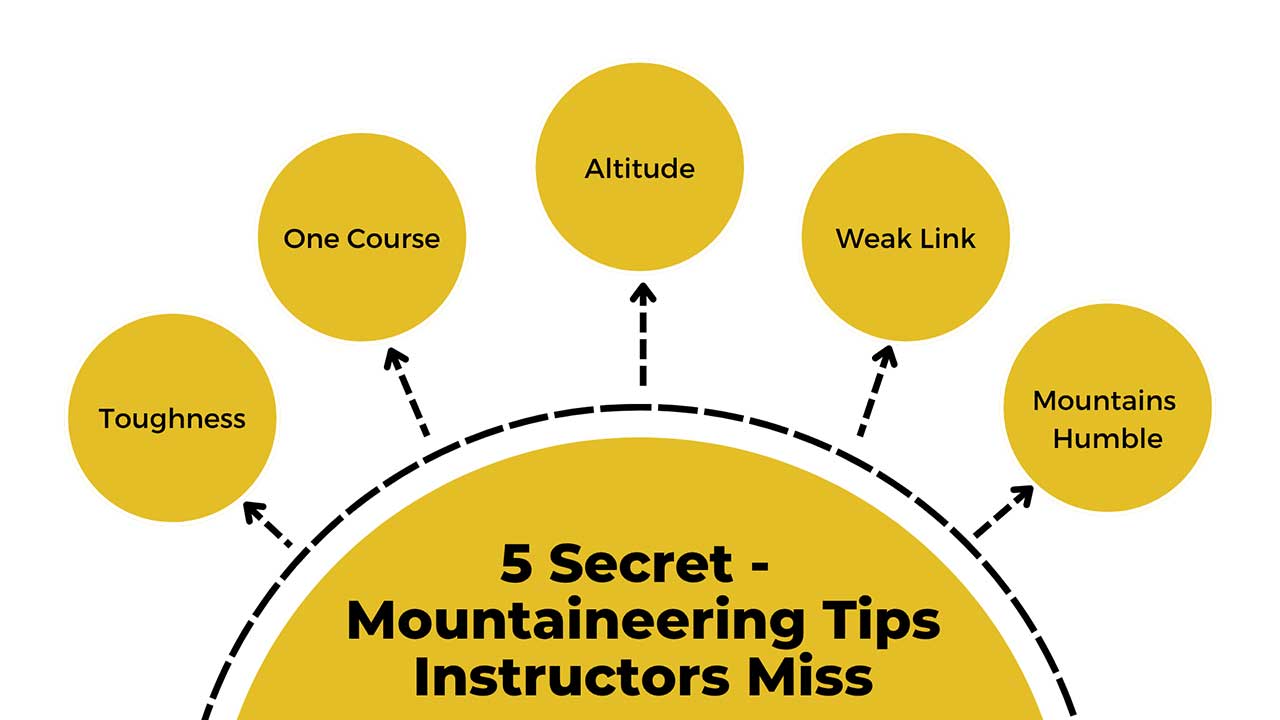5 Things Your Mountaineering Instructor Won’t Tell You (But You Should Know)
Athlete Health
Introduction
You’ve signed up for your first mountaineering course. You’ve packed your gear, broken in your boots, and mentally prepped for the adventure ahead. You’re ready, right?
Not quite.
While mountaineering instructors teach you valuable technical skills—how to belay, ascend, self-arrest, or read avalanche terrain—there are still critical aspects of the mountain experience that go unspoken. These aren’t oversights—they’re realities you only grasp through experience.
At Ascent Descent Adventures, we’ve trained thousands of climbers across the Indian Himalayas. Here are 5 unspoken truths your instructor may not tell you, but you absolutely need to know before setting off into the high mountains.
1. Mental Toughness Matters More Than Muscle
Most beginner climbers focus on physical training—cardio, weights, endurance. But high-altitude challenges are often more psychological than physical.
When the cold bites, exhaustion kicks in, or your summit day starts at 2:00 AM in sub-zero winds, it’s mental resilience that carries you forward.
What You Should Do:
- Prepare your mind through mindfulness or breathing techniques
- Accept discomfort as part of the experience
- Focus on the journey, not just the summit
At altitude, your mindset is your survival kit.
2. You Won’t Learn Everything in One Course
A 10-day or 28-day mountaineering course gives you a solid foundation. But true mountain competence takes years of exposure to varied conditions, routes, and real-world decision-making.
Instructors may not emphasize this enough—but you’ll leave your first course knowing just how much you still don’t know.
What You Should Do:
- Don’t rush to lead treks post-course
- Join additional training like our High Altitude Survival Course
- Gain mentorship from experienced climbers
3. Altitude Illness Doesn’t Care How Fit You Are
Many beginners believe being young, fit, or athletic protects them from AMS (Acute Mountain Sickness). It doesn’t.
Altitude illness can strike anyone—regardless of fitness level—especially if they ascend too quickly.

What You Should Do:
- Ascend gradually and respect acclimatization days
- Learn to recognize early symptoms: headache, nausea, dizziness
- Never ignore signs or “push through” altitude-related fatigue
Instructors won’t always spell this out—but AMS can derail even elite climbers.
4. You Might Be the Weak Link (and That’s OK)
In group expeditions, there’s often an unspoken hierarchy. The slowest person feels guilty. The fastest feels impatient. But at some point, everyone becomes the weakest link—especially in the mountains.
What You Should Do:
- Communicate openly with your team
- Don’t compare your pace—focus on your safety
- Ask for support when needed. It’s a sign of responsibility, not weakness.
Instructors may not call this out, but the best teams are those where everyone supports each other, regardless of skill level.
5. The Mountains Will Humble You—Every Time
This isn’t just poetic. Every experienced climber has had moments when nature changed their plans. Sudden storms, route closures, or injuries can derail even the most meticulously planned climb.
Your instructor may want to keep morale high—but the truth is: nature always has the final say.
What You Should Do:
- Be ready to turn back if conditions demand
- Detach ego from “success”
- Embrace the unpredictability—it’s part of the mountaineering code

Final Thoughts
Learning from a certified instructor is a wise first step—but your real education begins on the mountain itself. These 5 truths help bridge the gap between classroom instruction and high-altitude reality.
As a beginner, the most important thing you can do is remain humble, alert, and open to learning—from nature, from your mistakes, and from your team.
Explore Courses Designed to Prepare You Fully
At Ascent Descent Adventures, we combine world-class training with real Himalayan exposure.
Mountaineering Course – Learn Core Skills
Expedition Preparation Course – For Serious Climbers
Friendship Peak – Ideal for First-Time Climbers
FAQs
Not yet. Gain more experience through repeated exposure and join advanced courses.
Yes, our instructors help you build both technical skill and mountain mindset.
The Indrahar Pass Trek offers moderate terrain, stunning views, and is great for new climbers.
Q. Can I lead a trek after one mountaineering course?
A. Not yet. Gain more experience through repeated exposure and join advanced courses.
Q. Is mental preparation part of the ADA curriculum?
A. Yes, our instructors help you build both technical skill and mountain mindset.
Q. What’s a good first Himalayan trek for beginners?
A. The Indrahar Pass Trek offers moderate terrain, stunning views, and is great for new climbers.
Recommended Read for Mindset & Practical Tips:
- 5 Mental Shifts to Help You Succeed in Mountaineering
- 5 Lessons You’ll Learn from Your First Failed Attempt
- 5 Ways to Stay Calm During a Mountain Emergency
- 5 Habits of Responsible Beginner Mountaineers